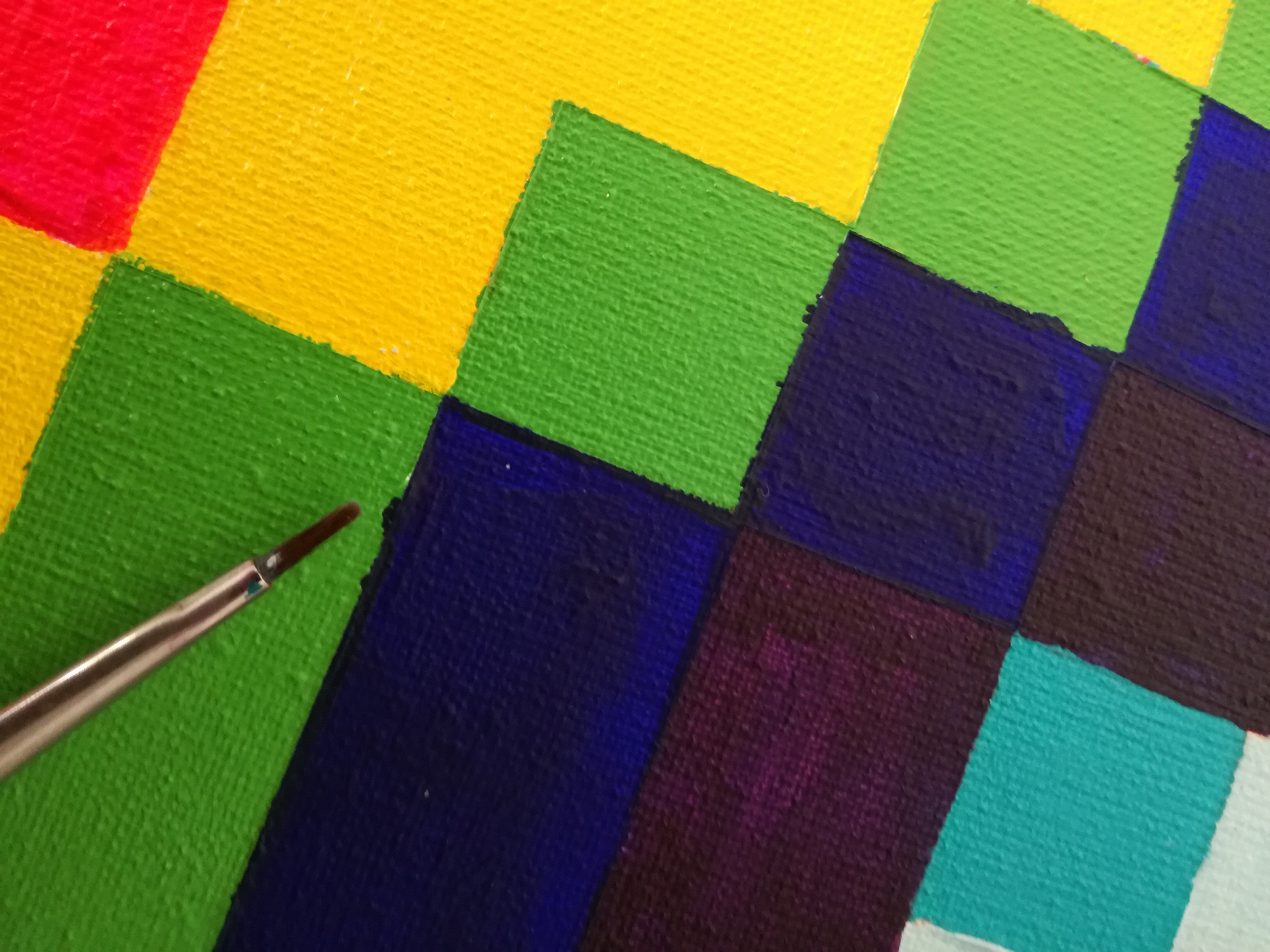This is where my pixel odyssey started: to abstract the already abstract: the symbol. I never really figured out why my journey into the worlds belief systems went through Super Mario, but I have a guess: Wisdom often enters one’s life through the open heart. Can there be a better way to ponder about my own aloftness, than this moment of losing the mushroom superpower, when being touched by another being?
Sünden/Tugenden (sins/virtues) consists of 14 small scale acrylic paintings and is split in two sub-series each having 7 works . Starting with only three paintings in 2016 (mushroom, heart, cherry) the original vending machine theme transformed in a more serious subject: each of the paintings represents one of the Seven Sins and Seven Virtues, that are used by the Christian belief to help people to navigate through their own personal activity options. Each painting of one series has a corresponding painting.
Sieben Sünden consists of seven paintings: Hochmut, Wollust, Neid, Trägheit, Gier, Völlerei und Zorn.
Sieben Tugenden consists also of seven paintings: Demut, Keuschheit, Wohlwollen, Fleiss, Milde, Mäßigung und Geduld.
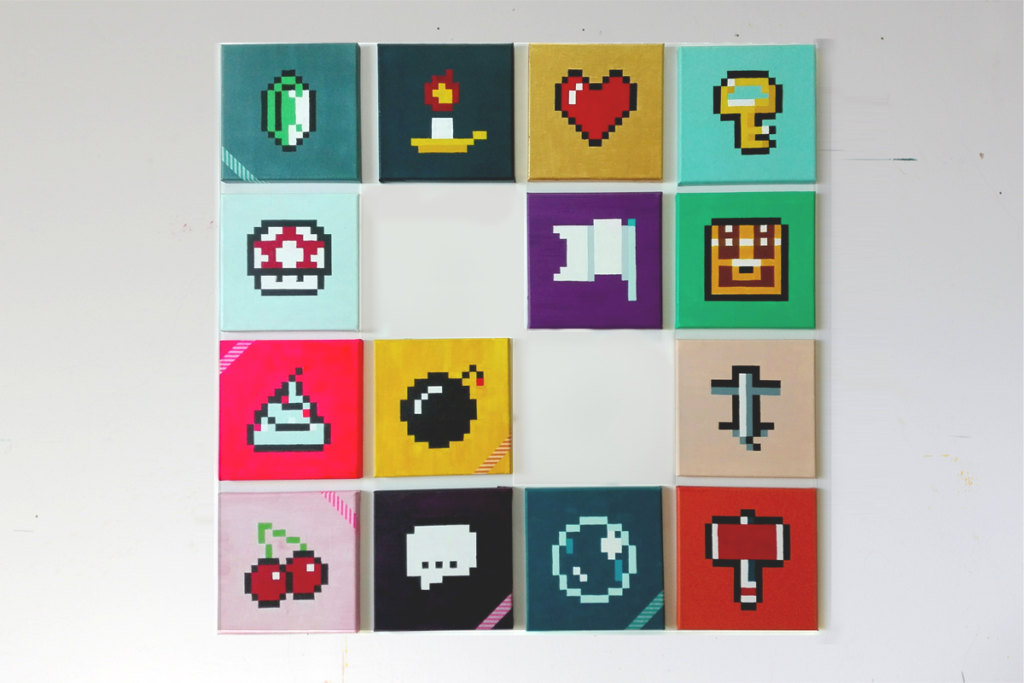
Sieben Sünden / Sieben Tugenden, each 20 x 20 cm, 2016/17
Geduld, Wolliust, Wohlwollen are privately owned
Tushita said Hi! is a square acrylic painting on canvas with spray color application. A rainbow on a clear blue sky is hovering over a cloud and being pierced by a ray of light. The cloud bearing the numeral 7. The scenery is framed by a broad golden outline. The concept of Seven Heavens originates in ancient Mesopotamia. It was mainly used within Western monotheistic religions and Hinduism. The 7th of those Heavens is said to be the seat of the highest spiritual beings. Tushita Heaven in Buddhism is also considered the highest place where devas and other most divine beings dwell. The rainbow is ephemeral: it can be seen as an example of the illusionary quality of our experiences in the physical world.
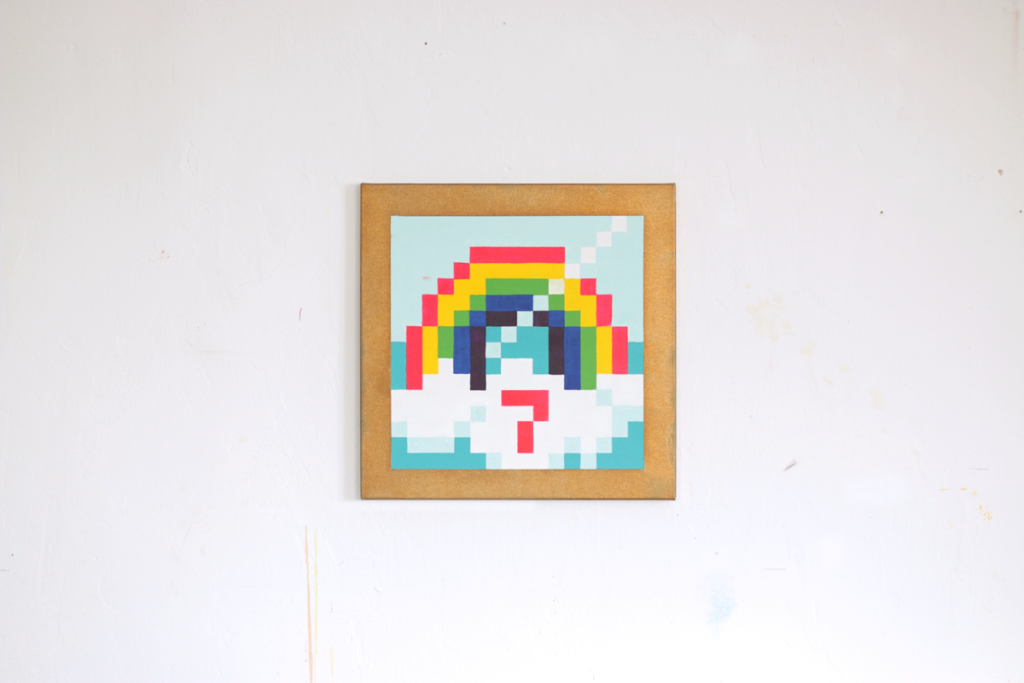
Tushita said Hi! 40 x 40 cm, 2018.
Welt (world) is a single square acrylic painting on wood. In the center – surrounded by scattered bright pixels is a modified version of an ancient wavy pattern used by the Etruscans and Celts in Europe, in East Asia known as Yinyang. The monochrom colors are replaced by a warm color (cadmium yellow) and a cold color (cerulean blue). Each of the four segments of the symbol represent one of the four base elements (earth and fire, water and sky/wind) thus representing in a simplified way the major forces creating our perceivable physical world.
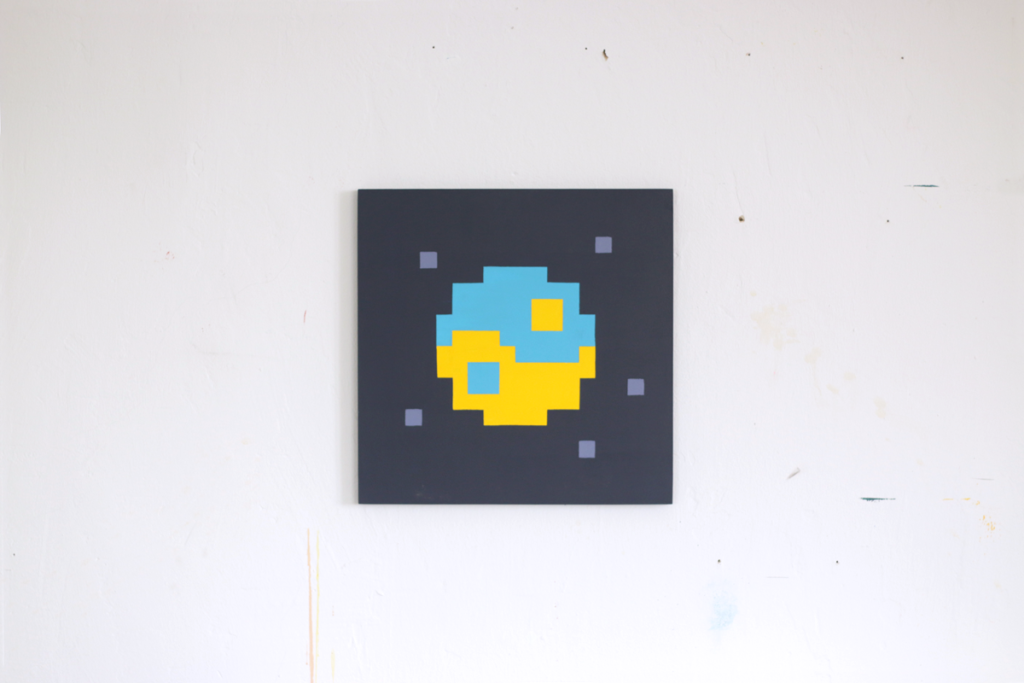
Welt, 40 x 40 cm, 2018.
Pixelikonen (pixeliconics) is a series of works created specifically by quoting medieval iconic painting techniques – like using restricted color palette of blue, red and gold leaf on wood. Instead of the original egg tempera colors, acrylics is used in terms of durability.
The first triptych is straight-forward comment on consumerist culture. Each painting depicts a major Western world food sin sugar-coated in central composition: BonBoom! is a sweet candy. IceScream! is a cone of cold delight and DoNot! is the master of non-nutrient food.
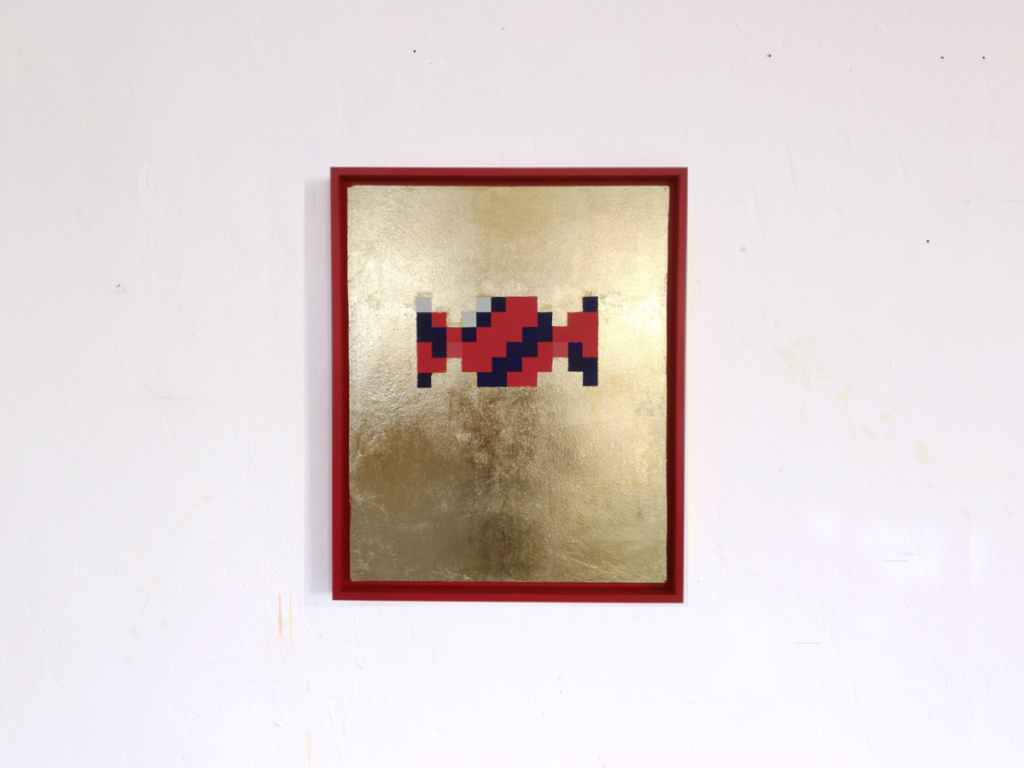
BonBoom! 40 x 50 cm, 2019.
privately owned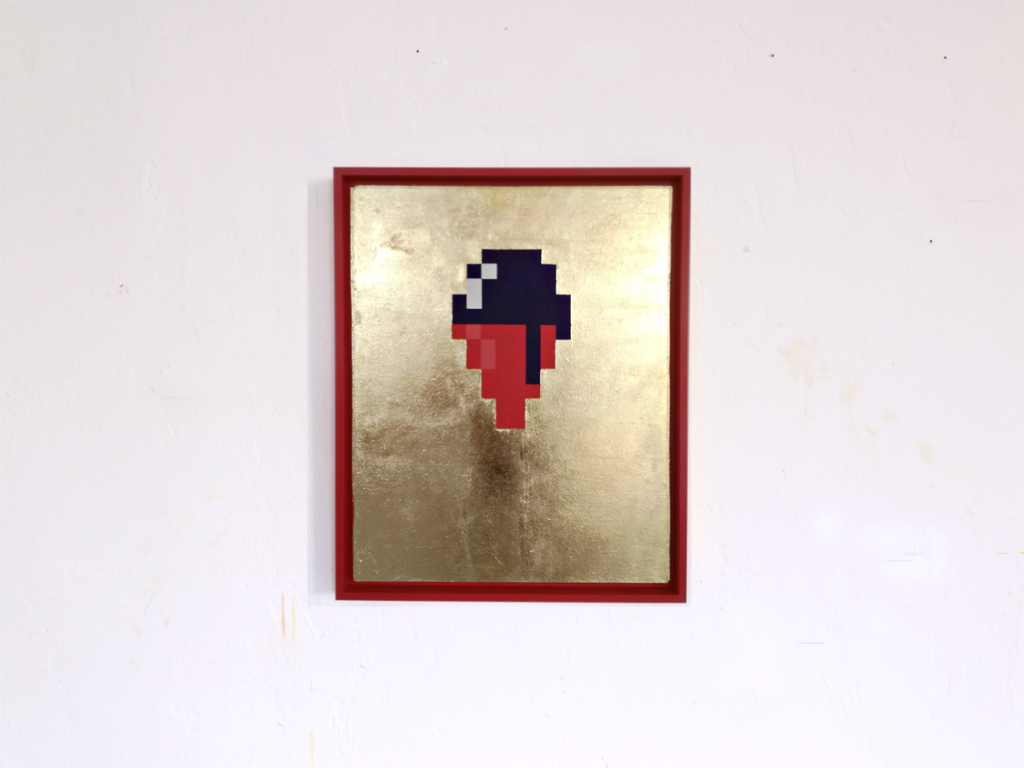
IceScream!, 40 x 50 cm, 2019.
privately owned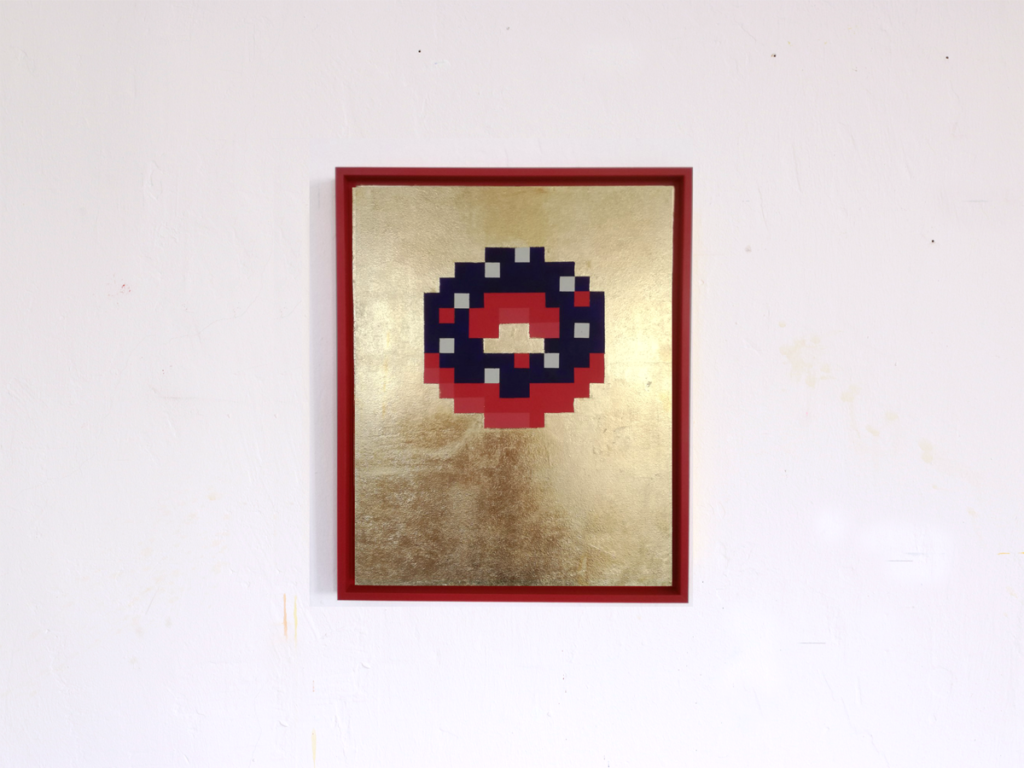
DoNot!, 40 x 50 cm, 2019.
privately owned
There are numerous projects that sprout out of this fanny little series. You can check out the adaption into the 3rd dimension or what kind of works of symbolism followed up after that specific project.

